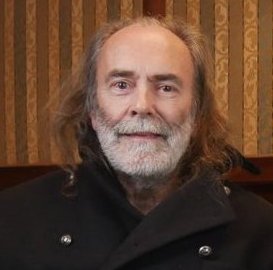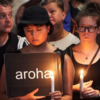
by Glyn Carpenter | 18 Jul , 2014 | FOCUS, Value of Life
NZ Christian Network welcomes the work of TV3 and Stand Against Slavery in exposing unfair practices in NZ that can rightly be categorised as slavery.
Read the media release from Stand Against Slavery …
– FOR IMMEDIATE RELEASE —
EXPLOITATION AND SLAVERY: IS THIS THE REALITY FOR WORKERS IN THE CHRISTCHURCH REBUILD?
AUCKLAND, NEW ZEALAND Last night, TV3’s 3rd Degree’s expose on the exploitation of vulnerable Filipino construction labourers might shock some kiwi’s who believe that exploitation and slavery does not happen in New Zealand. The programme exposed the actions of Tech5, a recruitment firm and Holdings Limited now in liquidation.
Stand Against Slavery defines slavery as when “a person is forced into an activity (including labour), held against his or her will by some method of control for the gain or profit of those who are in control of that individual.”
Tech5 provided substandard accommodation at exorbitant rates ($155 per person per room, with three men to a room), made a verbal arrangement with the men before leaving the Philippines that they would be liable for the cost of their toolbox, but once in New Zealand that cost escalated to $7,700 each (now slightly reduced to $5,600 per person), and repaid at a rate of $125 per person per week for over a year. This cost was stipulated in a replacement contract that was given to the men once they arrived in New Zealand under obligation to sign. These men are vulnerable migrant workers, in a new country, with a visa conditional upon their being connected to Tech5. Tech5 was in a position of power and abused the specific vulnerability of their workers. In addition, they created a debt bondage within the contract in stipulating that if those workers left their employment before the end of the contract, they would be liable for just over $10,000 US Dollars. Tech5 Wellington Director, John Wyatt described it as “protecting their investment”. Stand Against Slavery would describe it as a coercive tactic employed by Tech5 management to control their workers and ensure that they stay working with Tech5. It is the type of tactic that would be criminalised under the new measures in the Immigration Amendment Act (No 2) Bill. Such measures are typical in bonded servitude and the reality of enslavement for many workers around the world, and now, in New Zealand today.
With Holdings Limited folding, their workers are now left without legal immigration status and must wait until Immigration New Zealand fix their visa. At the recent Prevent People Trafficking Conference in Wellington during June 2014, an Immigration Official mentioned that a new policy regarding an open visa for vulnerable workers such as the Holdings Limited workers, is still being “discussed”. Therefore, the fate of these workers is unclear. If Immigration NZ determines that they cannot provide another work visa for the workers, and they are repatriated home, the workers fate will be bitter-sweet. They will see their families but they will have at least $4,000 owing to local debt collectors, and wages in the Philippines are much lower than New Zealand, as such, their ability to repay those loans will be severely impaired. Therefore, the Directors of Holdings Limited get off scott-free while these workers will pay the cost for years to come.
Stand Against Slavery believes that the government should be moving on policies to ensure that migrant workers are protected. We agree with Paul Brown, lawyer for some of the Tech5 employees, that every person in New Zealand who is legally able to work, should have access to basic standards of employment law. We also believe that the open-visa policy for exploited migrants should be addressed urgently and incorporated into the Immigration Amendment Act (No 2) Bill.
Stand Against Slavery is an organisation that is determined to increase the consciousness and active participation of the New Zealand public about the global injustice of human slavery and the trading of slaves in every country in the world, including New Zealand.
–ENDS—
For more information, please contact Steph Lambert, Head of Advocacy and Capacity Building

by Glyn Carpenter | 4 Oct , 2013 | FOCUS, Value of Life
Driving home today listening to a National Radio Worldwatch item about discussions in Belgium about euthanasia for children. Who said we don’t need to worry about a slippery slope?
We can be thankful for the time being that Maryan Street’s euthanasia bill for New Zealand has been withdrawn, but we should also remember that it is “only for the time being”. When advocates think the time is right, the bill will be reintroduced and Kiwis need to be ready and informed.
Having dinner recently with a friend in Wellington who I regard as very clued up in matters of church and public issues, I was surprised to hear him talk about switching off life-support machines as euthanasia. It’s not!
And if people are not well-informed on the issue, there’s a real danger that when a bill to legalise euthanasia is re-introduced, misinformation will determine the outcome rather than facts and the public good.
One group that I have met has set up a website called euthanasiadebate.org.nz which gives some pretty simple facts and arguments against legalising euthanasia. In a one page flyer called “8 dangers of legal euthanasia” they talk about difficulties with so-called legal safeguards, elder abuse, and other reasons why legalising euthanasia is not a good idea. The back page of the flyer provides answers to common FAQs.
A student doctor I know changed his view on this issue after reading the information and meeting with Professor David Richmond, chair of HOPE Foundation, who supports this initiative and is a specialist in this field.
I recommend having a look at the flyer, and if you think it’s useful forward this post to others. If it’s easier, you can even use the Facebook / Twitter buttons below to share it with your friends.
http://euthanasiadebate.org.nz/wp-content/uploads/2013/05/Eight-Reasons-Flyer-1.5.13b.pdf

by Guest Author | 23 Aug , 2013 | FOCUS, Social, Value of Life
By John Waters
The Irish Catholic
I wrote an article in one of the national newspapers a couple of weeks ago in praise of Lucinda Creighton and afterwards received an email that gave me pause for reflection. It was short and not so sweet. My correspondent didn’t like my views, and indeed seemed to like Lucinda’s even less. But what intrigued me was the graphic image at the core of the communication – of a teenage Down Syndrome girl who has been raped. People like Lucinda Creighton and myself, he declared, were standing in the way of her receiving an abortion.
The email didn’t change my mind about abortion, but it put me thinking about the way liberals have managed to win this debate, and will go on to win many more. I was briefly tempted to write back to this man (my correspondent was male) and ask him for the name of the teenage girl he referred to. In the end I decided against this course, feeling that it might give him a perverse kind of encouragement.
But of course there was no teenager with Down Syndrome. The girl had no name because she did not exist. It stuck me then that at least half of the argumentation put forward by the ‘pro-choice’ lobby is similarly lacking in any reality, being purely hypothetical. I can think of no other issue in respect of which the debate could take place in such abstract, dissociated terms. Imagine a debate about motor transport, for example, being conducted in this way: it would take just one or two instances of people being killed by motor vehicles to ensure that mechanically-propelled vehicles were banned for all time.
In the past 30 years, there has been a handful of real-life public controversies in which the issue of abortion was critical in the life of an actual woman – the X and C cases, for example, and more recently the Savita Halappanavar case. And yet, the pro-choice, building on this handful of cases, and augmenting its arguments with a series of creative hypotheses has, in effect, changed Ireland from being a nation inflexibly opposed to abortion to a society on the cusp of giving the nod to one of the most liberal abortion regimes in the world.
The debate of the past nine months confirms that this is going to happen, and there is no point in sticking our heads in the sand. Given the conditions in which these ‘debates’ occur, this is inevitable and cannot be prevented. For one thing, the ‘debates’ are almost invariably hosted by ‘liberal’ journalists, and, for another, the skewed dynamics of the ‘debates’ ensure that these are really dramas in which traditionalist forces are pitted against liberals in a manner than ensures only the liberal argument can win. Hence, it is not so much a question as testing both sides of an argument as dramatising the victory of ‘truth’ over ‘error’. If the present media culture is permitted to continue, abortion will eventually be introduced into Ireland. It is only a matter of time.
But those taking up the other side of the argument must take some responsibility also. Because of its outlook, ideology and tactics, the pro-life side has done much to deliver victory into the hands of its opponents, most notoriously in its promotion of the 1983 constitutional amendment, which had the effect of overriding a perfectly adequate anti-abortion law with a measure that in effect placed the rights of mother and child in diametric opposition, leaving the decision in complex cases to be decided by the courts. Once you redefine the relationship of mother and child outside its natural symbiosis, identifying the two parties as competing entities, the child has a diminishing chance of survival. Hence, that amendment unwittingly delivered the unborn child into a new dispensation of individualised rights, in which the balance of advantage – by virtue of ideology and the media’s capacity to manipulate public sympathies – would most likely be overwhelmingly on the side of the mother. Each successive case has resulted in a further erosion of the legal situation, which has now been formalised in the Protection of Life in Pregnancy Bill.
At the heart of this debate has been the recurring theme that pregnancy is always by definition an imposition on a woman, unless she chooses to define things otherwise.
Once this idea is accepted, abortion on demand becomes merely a matter of time, because the very bedrock of the culture becomes contaminated with a quite different understanding of human nature and purpose than was understood hitherto. Rarely is it pointed out that it is not in the nature of mothers to be opposed to their children, unborn of otherwise. On the contrary, the very idea of motherhood, and indeed fatherhood, is centred on providing for the needs of the child even at the expense of the parent’s personal well-being or even ‘rights’. Most parents, for example, would think nothing of risking their lives to rescue one of their children from a burning motor vehicle. And yet liberals use as a central bulwark of their debating tactics the idea that no woman should ever be expected to incur any risk by virtue of being pregnant.
Life is risk, and most people accept this. The number of people who are unwilling to run such risks for their children are miniscule, and yet the outlook of this tiny notional minority is used to effect the most fundamental changes in our understandings about the very nature and structure of human beings.
Another major failing on the pro-life side has been its attitude to the position of fathers in relation to unborn children. Irish Catholicism is by its nature mother-centred, and has therefore, unbeknownst to itself, been supplying a harmony to the feminist rhetoric emanating from the ‘pro-choice’ side. There is no point banging on, in different contexts, about ‘family values’, if you neglect to emphasis this aspect where it is most vital. The only person I heard alluding to fathers during the recent discussion was the (now former) Fine Gael TD Peter Mathews.
And there is an even more fundamental difficulty in as far as the Catholic contribution to these discussion is concerned. In recent times, Irish Catholicism has been asserting itself in the public domain almost exclusively in the context of battles to prevent the social drift of Irish society from taking a different direction to Catholic moral teaching. The word ‘abortion’ has become almost a synonym for ‘Catholic’, provoking public demonstrations characterised by extremist statements and intense rage. Meanwhile, the insistent and growing pressure in our culture to remove Christian thinking from the mainstream of education and culture attracts virtually no opposition from within the Catholic Church – apart from an occasional and timid resistance which might easily be construed as the straightforward protection of territory.
It is a problem that Catholic contributions to these debates rarely penetrate to the heart of the Christian teaching involved. Thus, the ‘traditional’ argument is easily dismissed as arising from simplistic positions, usually expressed in the form of unadorned and unsubtle rules – for example, that ‘all human life is sacred’, or that ‘marriage is between a man and a woman’. Such is the construction of the debate-drama that the reiteration of such reductionist rules serves merely to confirm that the interest of Christianity in this context is to oppose the impetus of modern society, rather than, for example, to make clear why Christians have come to think as they do. In the kind of public discourse we have arrived at, the telegrammatic expression of such values acquires precisely the texture and context which those on the other side of the argument rejoice in.
Do you think the above opinion piece rings true in New Zealand culture? Please comment below…









